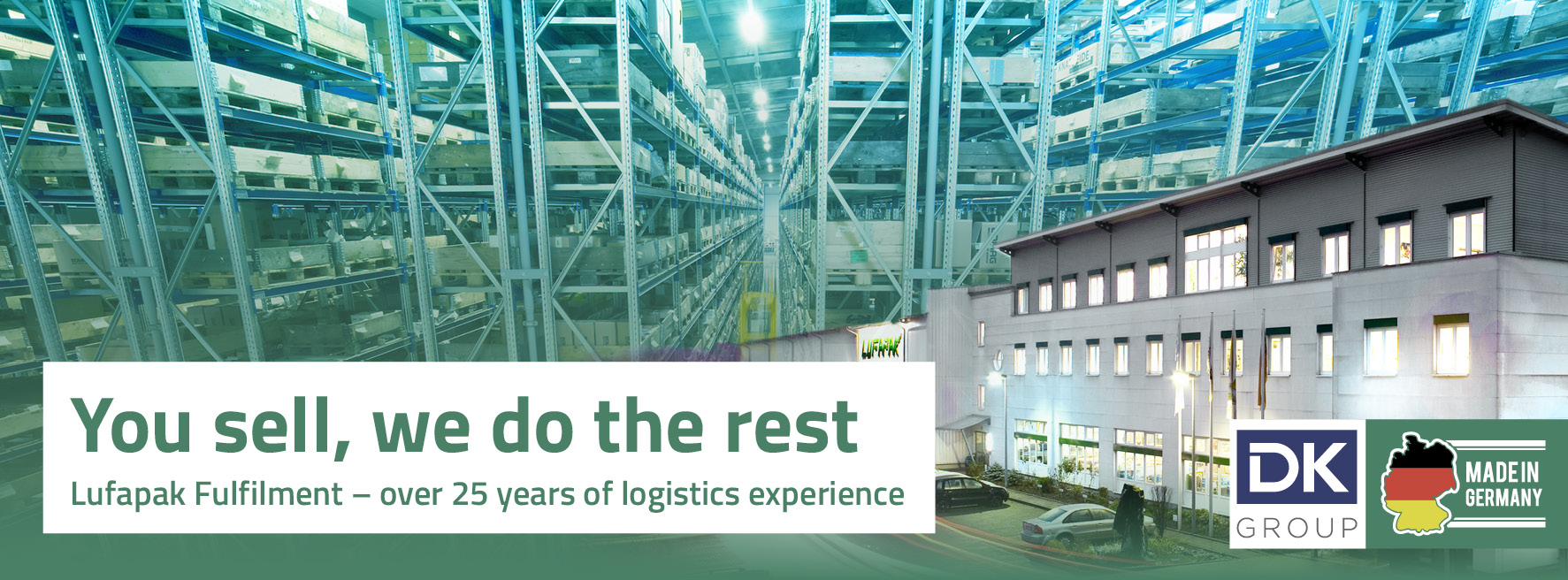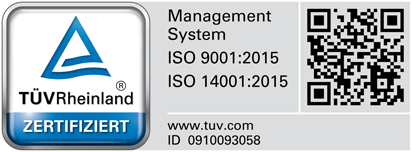sales@lufapak.de +49 2631/384-0 Contactform
The modern logistics world is characterised by complexity, a fast pace and the constant striving for efficiency and transparency. In this dynamic environment, end-to-end processes (E2E processes) play a crucial role. They encompass all steps of a supply chain – from the initial order to production and delivery to the end customer. The implementation of end-to-end E2E processes enables companies to optimise their workflows, reduce costs and increase customer satisfaction.
The importance of end-to-end processes for modern logistics cannot be overestimated. They provide the basis for a transparent, efficient and responsive supply chain that is able to adapt quickly to changing market conditions. By networking all the players and processes involved, E2E processes enable a holistic view of the supply chain. This makes it easier to identify bottlenecks, optimise inventories and improve delivery times.
Basics of end-to-end logistics
End-to-end logistics refers to a comprehensive approach to logistics and supply chain management that integrates all processes and activities from the procurement of raw materials to the delivery of finished products to the end customer and, if necessary, their return. This approach aims to ensure a seamless connection of all steps in the supply chain in order to maximise efficiency, transparency and customer satisfaction.
The term “end to end” implies that every single action, decision and process within the supply chain is geared towards achieving a holistic and optimised result. It is not just about improving individual sections of the chain, but about viewing and optimising the entire system as a unit. This includes planning, procurement, production, storage, transport, distribution and customer service as well as return logistics for returns or recycling.
The role of E2E processes in the supply chain is of fundamental importance, as they form the basis for an efficient and responsive supply chain. By integrating and coordinating all activities, E2E processes enable better control and visibility over the entire process. This helps companies to identify bottlenecks, minimise risks, reduce costs and shorten delivery times. In addition, an end-to-end optimised supply chain helps to better meet customer expectations by ensuring on-time and high-quality delivery.

Another aspect of end-to-end logistics is its ability to promote collaboration between the various players in the supply chain. By sharing information and data transparently, everyone involved – from suppliers to manufacturers and logistics service providers to retailers – can better harmonise their processes and work together to achieve the overarching goals.
Key elements of the end-to-end supply chain
The end-to-end supply chain encompasses the complete integration of all processes from product development to the procurement of raw materials, production and transport through to delivery to the end customer. Key elements in this comprehensive approach are the integration of suppliers and partners, the use of technology and automation as well as data analysis and real-time tracking. These elements contribute significantly to increasing efficiency and improving the entire supply chain.
Integration of suppliers and partners
The integration of suppliers and partners is a central aspect of the E2E supply chain. Close cooperation and networking with all parties involved can optimise processes, shorten delivery times and reduce costs. Integration enables a smooth flow of information and promotes transparency within the entire chain. This helps companies to react more quickly to changes, avoid bottlenecks and increase productivity.
Technology and automation in end-to-end logistics
Technology plays a crucial role in modern end-to-end logistics. The use of ERP systems (Enterprise Resource Planning), IoT devices (Internet of Things) and AI-based solutions (Artificial Intelligence) supports the automation of processes, reduces manual intervention and minimises sources of error. Automated systems enable orders to be processed more efficiently, stock levels to be managed precisely and transport routes to be optimised. Technology therefore not only promotes efficiency, but also the scalability and flexibility of the supply chain.
Data analysis and real-time tracking
Data analysis and real-time tracking are indispensable tools for transparency and control over E2E processes. Collecting, analysing and using data enables companies to identify patterns, make forecasts and make informed decisions. Real-time tracking systems provide the ability to track the status of shipments at every stage of the supply chain. This increases visibility for companies and customers alike and helps to strengthen confidence in delivery reliability.
Future trends in end-to-end logistics
The logistics industry is on the cusp of profound changes, driven by technological advances and changing market requirements. Two technologies that stand out in particular and are expected to play a central role in the future of E2E logistics are artificial intelligence (AI) and blockchain.
The role of artificial intelligence and machine learning
AI and machine learning have the potential to radically transform E2E logistics. By analysing large amounts of data, these technologies can help to optimise processes, make predictions and improve decision-making. For example, AI can be used to optimise routes and supply chains by analysing traffic patterns and predicting the fastest or most cost-effective routes. This not only applies to geographical navigation, but also to the planning and management of goods flows through complex supply chains.
Another field of application for AI is the prediction of fluctuations in demand. By recognising patterns in historical sales data, companies can react better to seasonal fluctuations, trends or events that could influence demand. This enables more precise inventory planning and reduces both overstocking and stock-outs, which can lead to significant cost savings.
Blockchain technology for greater transparency and security
Blockchain provides a secure and transparent way to track and document transactions within the E2E supply chain. Each block in a blockchain contains a cryptographically secure, immutable record of a transaction or process step. This enables all participants in the supply chain to seamlessly trace the path of a product from the manufacturer to the end customer.
The advantages of blockchain technology are manifold. Not only does it increase transparency and trust between partners in the supply chain, it can also help to combat fraud and counterfeiting. In addition, blockchain enables more efficient processing of contracts and payments through smart contracts that are automatically executed as soon as certain conditions are met. This can increase efficiency and reduce costs, especially for international transactions.
Conclusion
The integration of AI and blockchain into E2E logistics promises significant improvements in terms of efficiency, security and transparency. These technologies offer the opportunity to optimise existing processes and develop new business models that meet the requirements of a rapidly changing global economy. Companies that recognise and implement these developments at an early stage will be able to secure competitive advantages and be prepared for the challenges of the future.
Contact us now and get advice


